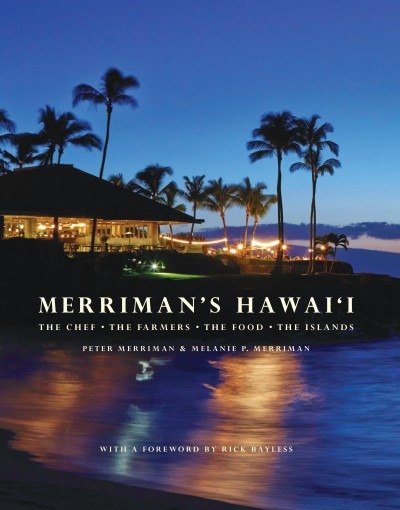
MERRIMAN’S HAWAI’I: The Chef, the Farmers, the Food, the Islands
Peter Merriman and Melanie P. Merriman
Story Farm
October 2015
$39.95/Hardcover
ISBN-13: 978-0-9905205-8-0
Peter Merriman and Melanie P. Merriman
Story Farm
October 2015
$39.95/Hardcover
ISBN-13: 978-0-9905205-8-0
Peter Merriman has been a culinary pioneer in Hawaii for over 25 years and is chef/owner of a growing group of restaurants, including Merriman’s Waimea on the Big Island, Merriman’s Kapalua on Maui, Merriman’s Fish House and Merriman’s Gourmet Pizza and Burgers in Poipu on Kauai, Monkeypod Kitchen by Merriman on Maui and in Ko’olina, Oahu, along with Moku opening in 2015 in Honolulu. His menus, which showcase island grown and harvested foods, reflect the flavors of Hawaii’s many climates, rich history and unique array of cultures. Dubbed the “Pied Piper of Hawaii Regional Cuisine” by The Los Angeles Times, Chef Merriman was inducted into the Hawaii Department of Agriculture’s Hall of Fame for his pioneering work in fostering small-scale agriculture throughout the state.
Best known in Hawaii, Chef Merriman has followers across the country. He has been featured in The Los Angeles Times (“Peter Merriman: The Aloha Alice Waters”), San Francisco Chronicle (“Peter Merriman: Sustaining Hawaii’s Seafood”) and in several New York Times articles, including “36 Hours on Maui.” Chef Merriman has also appeared on the Food Network’s Extreme Cuisine and Chef Hunter, and most recently in 2014 on Bravo’s Emmy-winning Top Chef .
MERRIMAN’S HAWAI’I brings the bold flavors of the islands to home cooks, no matter where they live. Every recipe, including signature dishes from Merriman’s restaurants, plus personal favorites Peter makes for family and friends, has been adapted for and tested in a home kitchen. Written and presented in an approachable style, these deceptively simple preparations of vegetables, fish, shellfish, lamb, beef, chicken, or pork yield deep, complex flavors. Each one features ingredients native to Hawaii, but widely available everywhere—pineapple, coconut, papaya, fresh greens, mushrooms and sweet potatoes—and spices that reflect the many cultures of Hawai’i—soy sauce, garlic, ginger, chili peppers, coriander, and curry.
MERRIMAN’S HAWAI’I is more than a cookbook—it offers readers a chance to experience not only the food but also the special people and spectacular places of Hawaii through the eyes of chef/restaurateur Peter Merriman. Chef Merriman shares his early days as an ivy-league football player-turned-cook who arrived on the Big Island in 1983 with one suitcase and $75 in his pocket, and decided to stay. After learning invaluable lessons cooking at a large resort, he launched his flagship restaurant, Merriman’s Waimea. Through delightful stories and 75 delicious recipes, Chef Merriman recounts his efforts to bring the ultra-fresh flavors of the islands to his own menus, introducing us to the farmers, ranchers, cooks and local characters who made it all possible.